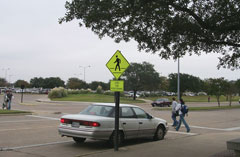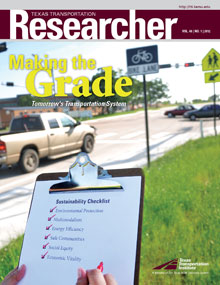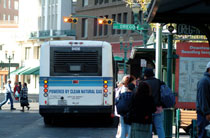The Big Picture of Transportation Development
Sustainability — a popular, emerging concept — has become a key consideration in the delivery and operation of transportation infrastructure, and at all levels of government. Sustainability deals with meeting human needs in the present and future, while preserving and restoring the environment, fostering community health and vitality, promoting economic development and prosperity, and ensuring equity among population groups and over generations.
“At this time of fiscal constraint, the New York State Department of Transportation [NYSDOT] must make some tough choices. To guide our decisions, we have incorporated the ‘triple bottom line’ of economic competitiveness, social equity and environmental stewardship into our programming and investment guidance. NCHRP’s A Guidebook for Sustainability Performance Measurement for Transportation Agencies provided NYSDOT with a much-needed methodology and comprehensive list to develop our sustainability performance measures.”
Debra Nelson,
NYSDOT assistant to the director of operations
“Sustainability is a way of looking at other costs that don’t always get considered in the decision-making process. Thinking about these costs should be broader than just the tangible dollars,” says Tara Ramani, assistant research scientist with the Texas Transportation Institute (TTI). “The question is less ‘how can we implement sustainable transportation?’ but really more ‘how can transportation support the principles of sustainability?’”
Ramani, along with the international team led by Joe Zietsman, head of TTI’s Environment and Air Quality Division, produced a sustainability guidebook that teaches transportation practitioners the principles of sustainability, how to develop goals and objectives based on sustainability, and how to apply performance measures for these goals.
A Guidebook for Sustainability Performance Measurement for Transportation Agencies provides a generally applicable framework that transportation agencies can adapt and use, either in their existing performance measurement programs or as a part of a new sustainability initiative. The guidebook provides a practical approach to understanding sustainability, and identifying and applying sustainability-related performance measures. It discusses linkages to an agency’s mission and strategic plan, and the integration of these sustainability measures into other programs and agency business practices. The guidebook also contains a compendium of sustainability performance measures, with a menu of goals, objectives and performance measures that agencies can use as the basis for their performance measurement applications.



“Working with performance measures can be a daunting task due to the large number of possible measures, extensive data required and complexity involved in applying the measures,” Zietsman said. “Moreover, a first step in developing performance measures for sustainability is to understand what sustainability means, and how it applies to transportation networks, systems, facilities, projects and activities at different stages, scales and time frames.”
The guidebook incorporates real-world examples from departments of transportation and private industry in both the United States and Europe. It’s designed to be flexible so that any division in any agency can apply, refine and modify it based on the specific context for planning, programming, project development, construction, maintenance or operations. The framework can be used in many different ways, such as to evaluate progress, assess current conditions, forecast the future, make decisions or communicate with stakeholders.
“The guidebook provides a wealth of information and resources for departments of transportation to use to understand the concept of sustainability and apply performance measures for their sustainable transportation goals,” Zietsman said.
Published by the National Cooperative Highway Research Program (NCHRP) in November 2011, the guidebook has been well received across the country. Zietsman plans on leading TRB webinars to help transportation officials learn how to use the guidebook.
“This guidebook should be of immediate use to those who are familiar with their own agency’s performance measurement program but need to provide useful information to agency leadership on how effectively their organization is meeting sustainability goals,” said Lori L. Sundstrom, a senior program officer with TRB. “The examples included illustrate how sustainability can be successfully added to an agency’s existing performance measurement system.”


